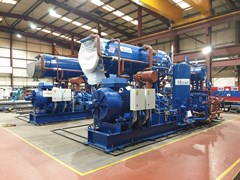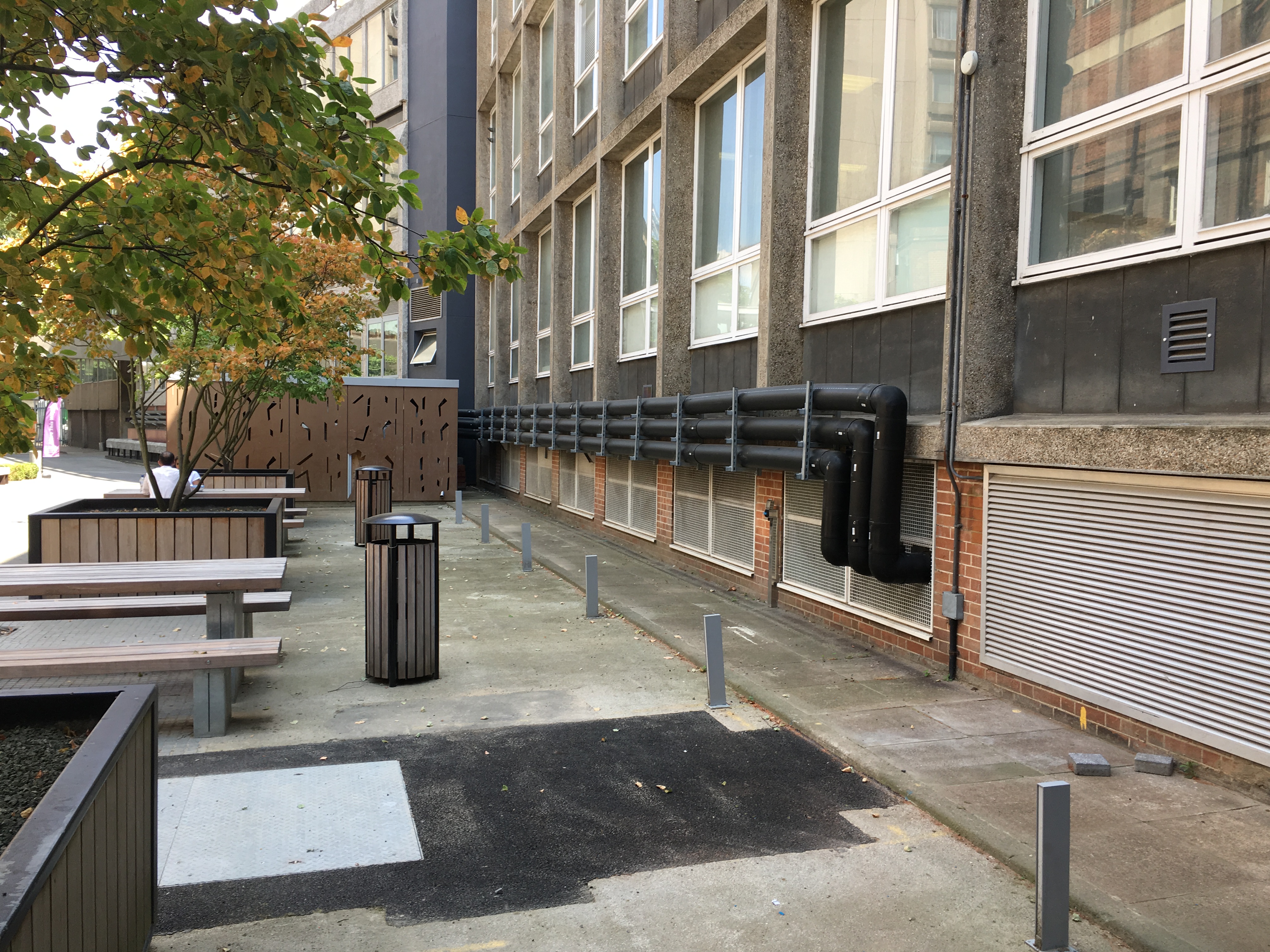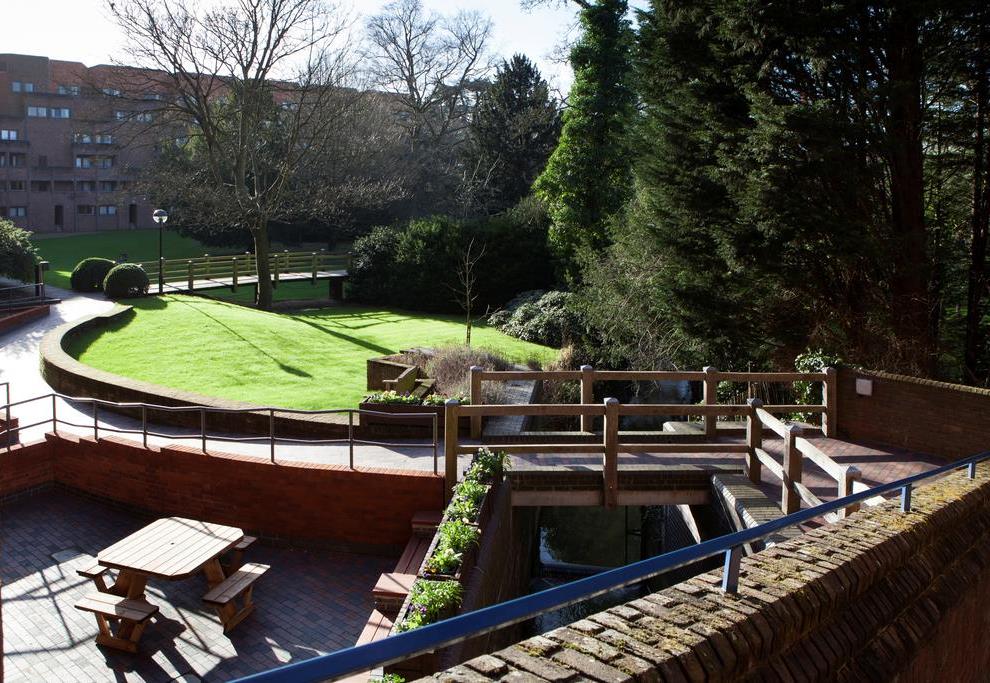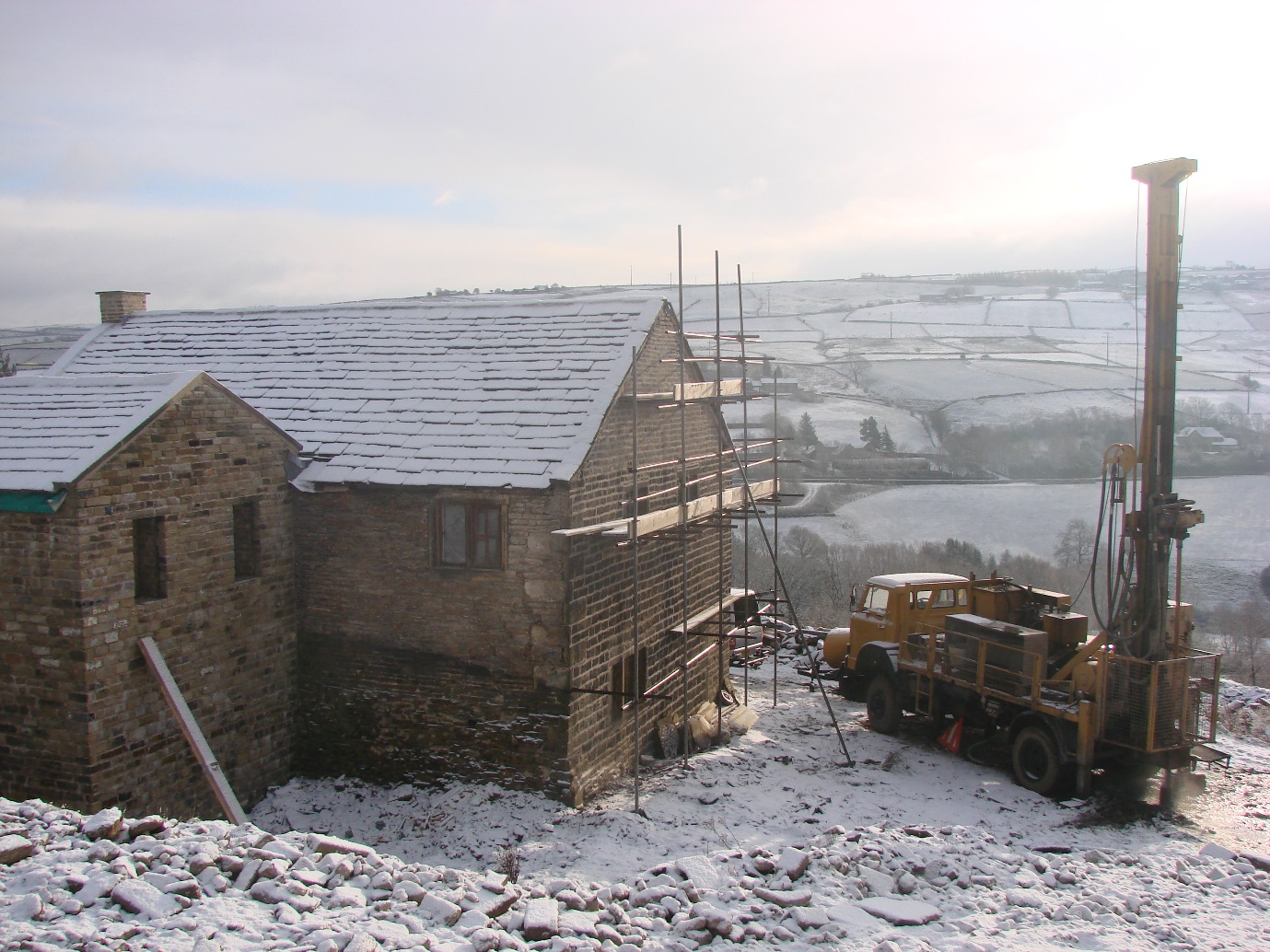WSHP Case Studies
GSHPA members have provided a number of notable water source installations. A number of interesting case studies are highlighted below. They show that water source heat pumps can often provide the best heating solution for larger buildings.
A WSHP can provide heating successfully to old buildings as well as new, to buildings in towns as well as buildings in the country, and to factories, hospitals and schools as well as to homes.
Queens Quay Heat Pump scheme, Clydebank
The Queens Quay Heat Pump scheme, which will be the largest of its kind in the UK, will take heat from the River Clyde to heat local homes and businesses. The project will demonstrate the use of large-scale heat pump projects in the UK.
The Queens Quay development in Clydebank will transform the former John Brown Shipyard from an industrial landscape to a vibrant, diverse and architecturally engaging community. The plans for the 23 hectare site will create 1,000 private homes, 200 rented homes and the associated infrastructure to support them such as a health centre, care home and commercial facilities.
The project will feature Scotland's first major water source heat pump, taking heat from the River Clyde and distributing it to customers through a district heating network.
The project use heat pumps built by Star Renewable Energy in Glasgow.
Decarbonised District Heating for three Housing Estates, Southwark
High temperature water source heat pumps have been installed in the Southwark plant rooms of three community housing estates – serving 2,175 homes – to provide base load heating in place of the gas boilers which were previously used.
The ICAX high temperature 600kW heat pumps are designed to provide a high temperature flow to the building so that existing heat distribution systems do not need to be refurbished. This saves time and avoids disruption so that retrofits can proceed with no disturbance to people living in the buildings.
Bath Abbey
Underfloor heating is being installed at Bath Abbey. The Abbey will be heated by heat pumps installed in its basement by isoenergy which will transfer heat from the waste water at around 37°C from the subterranean Roman drains that carry over a million litres of water a day from the Roman Baths down to the River Avon.
Don't let anyone tell you that heat pumps can only be installed in new buildings.
Shoreham Port Authority, Shoreham-by-Sea, West Sussex
A marine source heat pump has being installed to heat Maritime House in place of the previous oil fired boiler.
ICAX designed an abstraction and rejection system to cope with the corrosive potential of salt water and biological growth and potential fouling from molluscs and other maritime debris.
The heat pump is designed to provide a high temperature flow to the building so that the existing heat distribution system within Maritime House did not need to be refurbished. This saved time and avoided disruption so that the retrofit proceeded with no interruption to the work that goes on in the building.
Balanced Energy Networks, London
Innovate UK awarded £2.9m towards the £4m BEN Consortium which has built a Balanced Energy Network at London South Bank University to demonstrate innovations in integrated energy supply chains.
The Balanced Energy Network incorporates a heat sharing network which is designed to provide a more cost effective, flexible, and scalable alternative to conventional district heating network technology. Heat sharing networks transfer warmth via piping circuits between buildings at near ground temperature and extract it via heat pumps in each building: fifth generation district heating and cooling networks.
Buildings which need cooling use heat pumps to reject heat to the ground circuit – to the benefit of those that need heating.
The buildings in the network contribute to load balancing of the Grid, and earn revenue, by using Demand Side Response across the Internet of Things.
On 6 November 2018 the Balanced Energy Network was announced as the winner of The Engineer's Collaborate to Innovate Award in the Energy and Environment category for its Fifth Generation District Heat Network which uses groundwater heat pumps.
Robinson College, Cambridge
A surface water heat pump at Robinson College transfers heat from Bin Brook to heat the college in winter and provide hot water all year round. Heat pumps and seasonal thermal energy storage with a sophisticated energy management system provides a totally automated system that balances the temperature in the building by heat exchange with the water in the brook that runs through the college gardens.
The water source heat pump has been added to the plantroom and provides the baseload heating to the college. The previous gas boilers have been retained to provide resilience.
St Cuthman's Retreat, Sussex
A retrofit water source heat pump installation uses high temperature heat pumps at St Cuthman's Retreat to service existing radiators and employs a control system to give priority to the water source heat pumps over the existing oil fired boilers.
The heat pumps retrieve heat from closed loop coils in the adjacent lake, as St Cuthman's retrieves Renewable Heat Incentives from Ofgem.
Tattleton Estate, West Sussex
Five buildings on the Tattleton Estate are linked with 1,000 metres of underground pipe to a closed loop system circulating water from the lake on the equestrian estate. Each building now uses its own heat pump to provide heating and hot water from the central source side ground array instead of relying on oil fired boilers and LPG.
Water and heat from a single borehole
During the renovation of this listed farmhouse, it was decided to replace the spring fed water supply with a water well. Earthtest Energy suggested that the same borehole could provide space heating and domestic hot water using a Soleco open loop heatpump. The underfloor heating fitted throughout the property uses water at up to 45°C, whilst domestic hot water is heated to 60°C. The installed system generates Renewable Heat Incentive payments of £43,841 plus inflation over seven years, which significantly exceeded the cost of the total installation. Annual savings of £1,800 against biomass pellets, make this cost efficient solution, which also minimises carbon dioxide emissions.
Heat Pump Efficiencies
The first ever Renewable Heat Incentive accredited system was a 26kw water source heat pump which heats a 750m² office development in Yorkshire. A report published by the Department of Energy and Climate Change on 11 February 2016 showed that it was also the most efficient of those monitored by an independent consultant. The one year study, which looked at both the efficiency of the heat pump and the efficiency of the whole heating system, revealed that the system installed by Earthtest Energy for Booth Brothers (Printers) Ltd was a huge 70% more efficient than the mean performance of the other systems monitored, and beat its nearest rival by 20%.
The report concluded "that it is possible to design, install and operate heat pump systems that provide a high seasonal performance factor, but that this high level of performance is not being realised on some installations".
See the full report on Heat Pump Monitoring.











